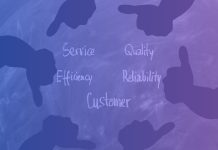Many customers want greater control of resources in Azure. This is especially true for those who moved without a clear foundation or need to expand their environment in an organized way.
As in an on-premise environment, correctly managing Azure resources is essential for success. Proper governance, operations, and administration ensure that your company fully leverages the Microsoft cloud. This approach allows you to provide the best possible service to your customers.
Until now, nobody thought about the adoption of Artificial Intelligence because it required a great deal of knowledge in the training of the models, the adoption of the technology, the necessary architectures, etc. OpenAI, hand in hand with Microsoft, has broken down all these barriers for its adoption due to the new paradigm of Multimodal LLM and, mainly, thanks to the use of natural language that it offers.
This means that any software from any manufacturer will be able to include some type of AI and, consequently, the great challenge will be how to govern and secure my information and how to maintain my internal compliance policies and those of the industry to which I belong. This leads us to think that, if we want to exploit data, integrations will be much more secure and agile if that data is in the cloud, i.e. in a cloud environment. That is why it is so necessary and important to talk about Azure governance as we cover all areas, such as infrastructure, application modernization, code, data analytics, AI, etc., all operated with full security and compliance.
According to Gartner, 85% of enterprises will adopt their first public cloud by 2025. Generative AI is expected to multiply cloud projects, driven by Azure’s capabilities compared to a fully on-premise world.
Types of customers
We describe three types of customers that can benefit from Azure Cloud:
- Azure-unaware: companies new to Azure that have not yet integrated this technology into their IT teams and whose business strategy has been through SaaS solutions such as M365, Dynamics, Salesforce integrated with On-premise infrastructure and applications. These companies may need guidance on where to start and how to begin their exploration of Azure.
- Explorer: companies that have started to deploy some services and applications in Azure in a very residual way, but do not follow best practices or use a specific methodology or monitoring. These companies may not fully exploit their data and lack a strategy for using Azure as their main data center.
- Mature: organizations that have already established a mature Azure environment and use it as their primary or hybrid data center. These companies deploy business intelligence projects, ERP integrations, CRM, low-code applications, etc. and have a clear strategy for using Azure.
Governance in Azure
- Strategy: the company’s strategy must be analyzed at a business and composition level. As an example, to understand the strategy we will define a subscription plan and policies that will allow for the future:
- Integrate new companies into our Azure strategy.
- Allocate costs by companies, departments, projects
- Identity: Identity has become the first line of security and business expansion. On the one hand, identity is a very important vector for cyber-attacks such as cryptomining and ransomware. On the other hand, identity allows us to guarantee customer service and increase the productivity of our companies’ workers.
- Organization of resources: like any data center, a good organization of resources allows optimizing the operations and consumption of Azure, which means reducing costs and improving ROI.
- Communications: Effective communication is key to ensuring that all teams and stakeholders are aligned with the Azure governance strategy. This includes setting up clear channels for reporting, incident management, and status updates on infrastructure, application performance, and security
- Resilience: it is important to have a contingency plan for critical and non-critical environments.
- Operations, maintenance and evolutionary: Here we can work with Azure DevOps, which, among many other things, will allow us to maintain the full lifecycle of operations and maintenance on applications.
- Security: establish security policies and procedures, enable security and monitoring tools, whether they are Azure’s own or from third parties.
- Policies and compliance: ensure that everyone who deploys something in our Azure Data Center does so following the rules established by the company, this will ensure internal compliance, security and will result in adapting to our IT budget.
Mastering Azure Data Center Management
Many customers are struggling to come to terms with the paradigm shift that working in the Cloud represents, even though the Microsoft Azure portal has improved significantly, enabling users to understand their costs and offering full transparency to customers. We use Azure as a hybrid data center and recommend defining an initial governance plan based on the specific project or deployment.. Having a well-defined governance plan is essential to using Azure effectively and reducing costs.
Prodware has found that applying the cloud adoption framework helps customers gain confidence and control, reducing their fear of making mistakes in Azure. Our team will help you govern your Azure environment so that you fully understand where your business stands, executing a plan of action that’s right for your company.





